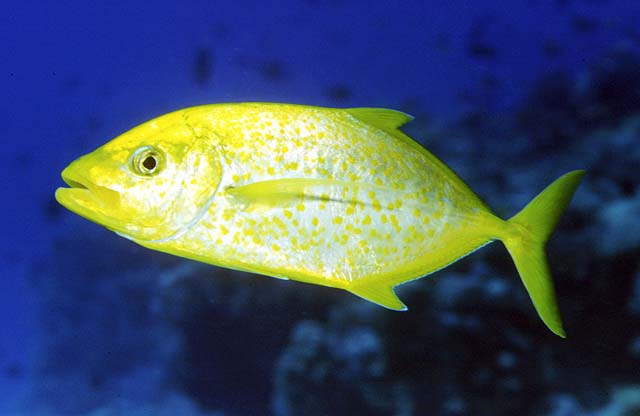| Carangidae (Jacks and pompanos), subfamily: Caranginae |
| 55 cm TL (male/unsexed) |
|
reef-associated; marine; depth range 2 - 70 m |
| Indo-West Pacific: Red Sea, Gulf of Aden, Persian Gulf, and the Gulf of Oman to Indonesia, the Gulf of Thailand, the Philippines, and Okinawa, Japan. |
|
Dorsal spines (total): 9-9; Dorsal soft rays (total): 24-26; Anal spines: 3-3; Anal soft rays: 22-24. Description: Brassy dorsally, shading to yellowish on sides and silvery ventrally with numerous orange or orange-yellow spots scattered on sides; capable of rapidly changing color to almost entirely yellow or orange. Body oblong and compressed, dorsal profile more convex than ventral profile. Breast completely scaled or with narrow scaleless area anteroventrally. (Ref 559, 90102) LL scutes 20-30. Teeth widest anteriorly (Ref. 90102). Tip of the upper jaw on a level with the lower margin of the eye. Attains 40 cm in SL (Ref. 559). |
| Adults are common along coastal reef slopes or around large coral heads in lagoons (Ref. 48635). A xanthic form often seen in muddy bays mixes in schools (Ref. 48635). Juveniles solitary in sheltered coastal basys (Ref. 48635). |
|
Least Concern (LC); Date assessed: 06 March 2015 Ref. (130435)
|
| harmless |
Source and more info: www.fishbase.org. For personal, classroom, and other internal use only. Not for publication.
